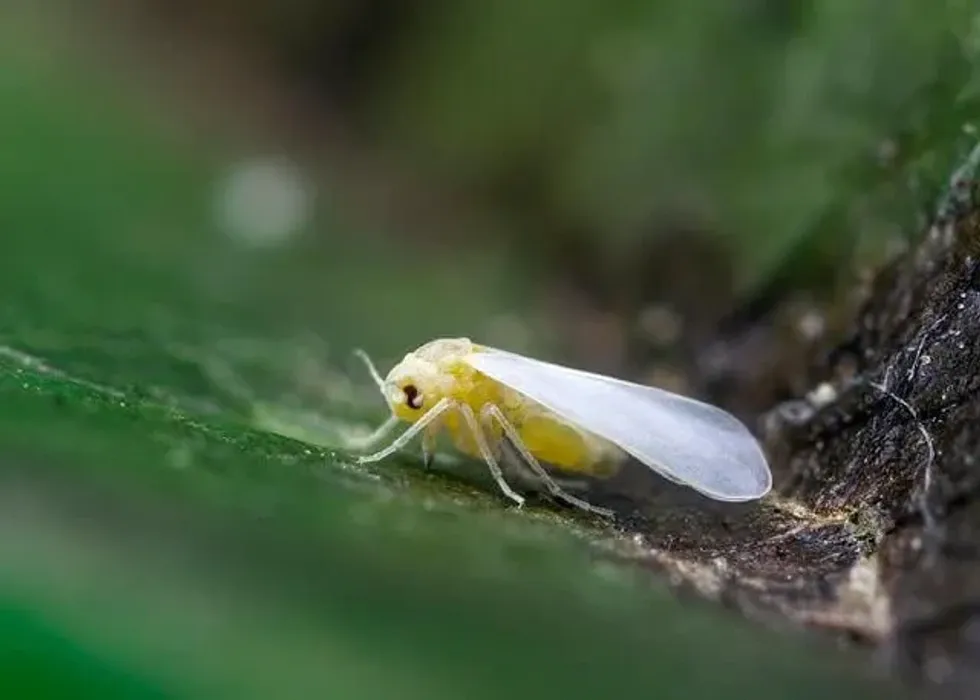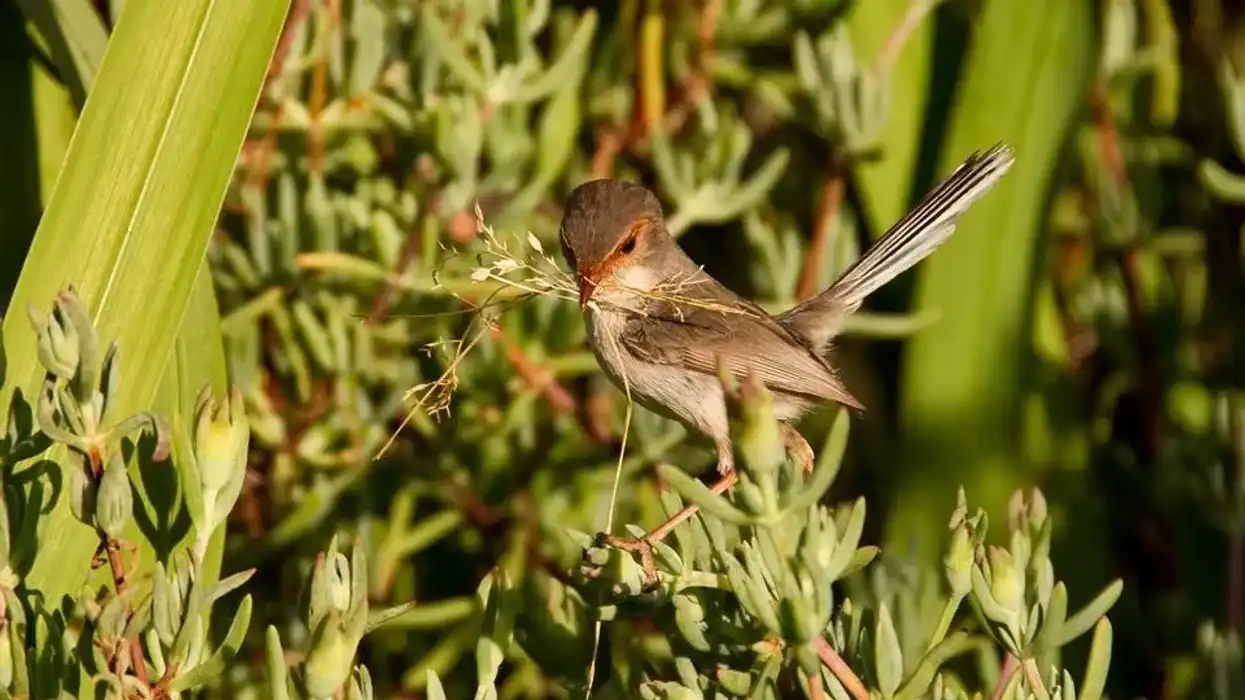What are those little white dots on your plants? They might be whiteflies!
Whiteflies are tiny flying insects that you can commonly find in your backyard. The good news is it's not likely to harm humans, but it does feed off plant juices and has been known to cause serious damage to crops.
Whiteflies feed on plant juices and cause damage by sucking the sap from a leaf, flowers, or fruit. They also produce honeydew which can lead to sooty mold growth and eventually kill plants.
They are also commonly known as greenhouse whitefly, since whiteflies are attracted to light they like to infest greenhouses. The giant whitefly adults have four wings but only two functional pairs. The other two wings serve as balancing organs used in flight.
The average lifespan of a whitefly is about 8-10 days, but they don't live by themselves their whole lives. Adults lay eggs on plants that hatch into larvae.
These larvae are natural predators for plant sap while maturing through four stages including nymphs before they become adults. Sometimes, nymphs will be surrounded with yellow sticky honeydew!
It's so interesting how these tiny insects go from one stage to another until they mature into adults fly and start the cycle again! Whiteflies have been known to spread diseases or contaminate food because of where they land on plants or other surfaces when feeding off plant fluids.
For more relatable content, check out these American dagger facts and puss moth facts for kids.
Whitefly Interesting Facts
What type of animal is a whitefly?
The greenhouse whitefly is a tiny pest that you can find almost anywhere. It is mostly harmless but it does suck plants juices from a leaf, causing plants to wither and die more quickly than if left alone.
What class of animal does a whitefly belong to?
Whitefly species belong to a large class, Insecta, and family called Aleyrodidae which can be either plant-eating pests or parasites on other organisms although many host plants find them helpful because they pollinate flowers while feeding off sap flowing through a leaf as well pollen grains later deposited by these same flower visitors onto the next blooming blossom.
How many whiteflies are there in the world?
As of today, there is no way to know for sure the exact whitefly distribution and number that exists in the world. A recent study has shown how some scientists have identified that the whitefly range includes 1556 different varieties so far between 161 genera and it's only been about 25 years since they've started looking!
Where does a whitefly live?
In the natural world, whiteflies are found in areas that have high humidity and temperatures.
They live mostly on plants but will also settle around other heat sources such as fireplaces or lights to warm themselves during cold winter months.
Whiteflies like wet environments so they can spread fungus spores which helps them feed off their host plant more easily because it provides a moist environment for fungal growth inside of the leaf's stomata cells where food is made available without having to produce digestive enzymes from its own body--thus saving valuable energy!
What is a whitefly's habitat?
Whitefly habitat includes sugarcane fields, and greenhouses in Southern America while also living throughout Asia including India where they're most common to be found near tea plantations.
In Europe, they are mainly seen around olive oil trees which makes them a problem for farmers who cultivate these crops since if left unchecked giant whitefly can destroy nearly all of their crops annually.
Who do whiteflies live with?
The tiny creatures that can be a menace to your garden and have an impact on food crops such as soybean or cotton mainly live in swarms of up to hundreds of thousands per plant. These pesky little flies are drawn to white flowers, which is why they're commonly found in groups on plants.
How long does a whitefly live?
An average whitefly lives for about two to three weeks. This pest may also go into a type of hibernation during its short lifespan to live through the winter months, but this is not always possible because it is a cold-sensitive creature that needs warmer climates and plenty of food sources in order to survive.
How do they reproduce?
The delicate greenhouse whitefly has an interesting life cycle. First, it lays eggs in a plant's flowers where the larvae feed on nectar and pollen.
It lays around 20-25 eggs in one go! When these eggs grow into nymphs to cause significant damage to plants, these nymphs leave their current host for another one nearby and repeat the process all over again until there are no more flowering undersides of plants left near the nymphs.
What is their conservation status?
Whiteflies are a type of insect that is considered Least Concern. This pest, like many other types of insects, has been categorized by conservation status and it's no surprise to learn that it is among the most common 'safe' bugs out there today.
Whitefly Fun Facts
What do whiteflies look like?

Greenhouse whiteflies look like tiny little flying bugs with wings - also known as aphids or plant lice! This sap-sucking pest appears to have a white powder all over itself because of its sticky substance called honeydew.
This honeydew is made up mostly of sugar syrup waste produced by this pesky pest when it feeds off your garden's produce giving it an unappealing appearance with its sticky honeydew. The tiny pest is about the size of a pinhead, and it has a white body with black stripes.
Whiteflies species often congregate together on the undersides of plants where their larvae feed on them or lay eggs. This pest has transparent wings and a yellow to cream color.
How cute are they?
Whiteflies are deceptive and dangerous, even though they may appear cute. Whitefly infestations are devastating for your garden, which even a strong chemical takes a while to fix! These insects attack the undersides of plants by sucking the sap out of a leaf.
How do they communicate?
Researchers have been puzzled about how greenhouse whiteflies communicate with each other. Whiteflies think that the insects' wings act as a conduit for sound, but they are still not sure what kind of sounds these creatures make or if all species produce similar noises.
How big is a whitefly?
It's hard to tell the accurate greenhouse whitefly size as they are just tiny little bugs! They measure just 0.03-0.07 in (0.1-0.2 cm) in length, which is about as big across as your fingernail and twice its thickness! Can you believe it's almost 10-15 times smaller than a regular monarch butterfly!
How fast can whiteflies fly?
Whiteflies are some of the fastest short-distance insects around, reaching speeds up to 7-8 in/s (20 cm/s).
How much does a whitefly weigh?
The mere weight of the whitefly species is not enough to keep it on the ground. Unlike most bugs, which can't fly due to their heavy exoskeletons and wings, these tiny scale insects float through the air!
What are the male and female names of the species?
Both female and male greenhouse whiteflies are simply referred to as whiteflies.
What would you call a baby whitefly?
Whiteflies hatch from eggs as miniature versions of their parents known as nymphs. The life cycle requires whitefly nymphs to go through three stages: eggs, larva, and adults.
What do they eat?
The greenhouse whitefly diet consists mostly of the undersides of plants. Whitefly pests will suck the sap from a leaf, which is bad for foliage because it can lead to a leaf turning yellow, and then death. Their own natural enemies are around the corner! A few of the natural enemies include ladybirds, bugs, and termites.
Are they dangerous?
Whiteflies can be incredibly destructive pests for your garden! They are often hard to spot but when you find them it's usually too late - by then they may have killed all or some of your favorite flowers or vegetables. Whiteflies are a nuisance to people because they fly around and bite.
Would they make a good pet?
Whiteflies are not the best pets to have in your house. They can be difficult to get rid of because they reproduce so quickly and fly all around, making them hard to capture with a swatter or even a vacuum cleaner.
Did you know...
Whiteflies have been around for a long time.
It is believed that they originated in South America and then spread to the rest of the world through plants, animals, clothing articles such as shoes or hats, and any other number of sources that are difficult to trace because it's not uncommon for this pest to hitch rides on many things!
How do you get rid of whiteflies?
There's a number of ways to keep your yard clear and control the growth of these nasty whiteflies!
One way to control is to use neem oil which has natural insecticides in it so they won't be able to eat any more plant life for up five months after one application; this will not only help control them but also many other types such as aphids and mealybugs.
Another option to control them would be using an old pair of tights filled with a chemical, and water then sprinkled liberally over the ground where there might be areas infested by the whiteflies needing control!
One common solution people use in their household gardens to control whitefly infestation is to plant marigolds alongside vegetables like peppers and tomatoes since these plants produce a chemical that suppresses production by a pest which also happens to attract beneficial insects who prey on other garden invaders!
What causes whitefly infestation?
One of the most common reasons for yellow silverleaf whitefly infestation is a lack of sanitation. Whiteflies are able to reproduce on decaying organic material, so it's important that your garden be well-kept and free from debris to control whitefly infestation.
Whiteflies seek out places with a lot of leftover food or spoilable products in order to lay their eggs which soon grow into silverleaf whitefly nymphs. In addition to this, moisture conditions can control their growth!
Here at Kidadl, we have carefully created lots of interesting family-friendly animal facts for everyone to discover! Learn more about some other arthropods from our queen butterfly facts and gulf fritillary butterfly facts pages.
You can even occupy yourself at home by coloring one on our free printable whitefly coloring pages.









